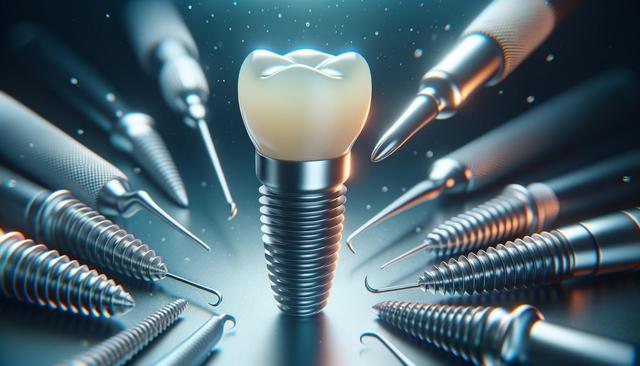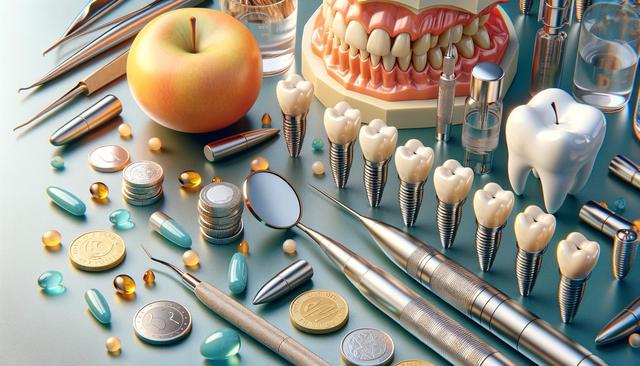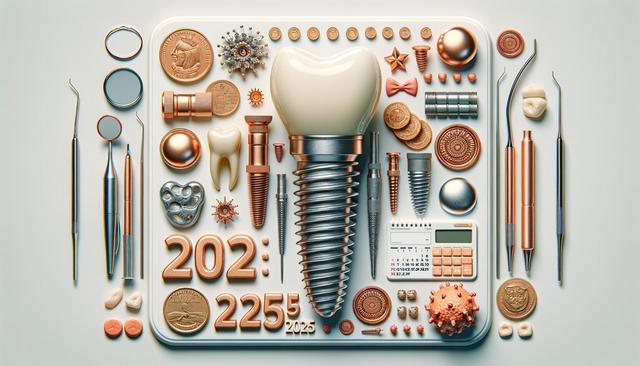What Are Dental Implants and Why Consider Them?
Dental implants are a popular solution for replacing missing teeth, offering a long-term option that closely mimics the look and function of natural teeth. As of 2025, advancements in materials and surgical techniques continue to improve outcomes for patients. A dental implant typically involves a titanium post inserted into the jawbone, an abutment, and a crown that sits on top. The process can take several months and may involve additional procedures like bone grafts or sinus lifts, depending on the patient’s oral health.
People choose dental implants for several reasons:
- They provide stability and durability, unlike dentures or bridges.
- They help preserve jawbone structure, preventing bone loss.
- They improve chewing ability and speech clarity.
- They can enhance self-confidence by restoring a natural-looking smile.
However, the upfront cost of dental implants can be significant, which makes it important to understand what contributes to the final price tag in 2025.
Factors That Influence Implant Costs in 2025
Dental implant costs in 2025 vary widely based on a range of factors. While the average price for a single implant ranges from $3,000 to $6,000, individual circumstances can shift costs up or down. These are some of the primary variables:
- Location: Urban clinics or practices in areas with high living costs may charge more.
- Experience of the provider: Highly experienced oral surgeons may have higher fees, reflecting their expertise.
- Materials used: Implants made with premium-grade titanium or zirconia often come with higher prices.
- Preliminary procedures: Bone grafting, tooth extraction, or sinus lifts increase the total cost.
- Type of restoration: Single-tooth implants, implant-supported bridges, or full arch replacements all come with different price points.
It’s also worth noting that dental technology advances in 2025 may offer more efficient procedures, potentially reducing time and some associated costs, although this doesn’t always translate into lower overall prices.
Breakdown of Typical Costs in 2025
To better understand how much you might pay for dental implants in 2025, it helps to break down the components involved. A full dental implant procedure includes several stages, each with its own cost:
- Initial consultation and diagnostics: $100 to $500, often including X-rays or 3D imaging.
- Surgical placement of the implant: $1,000 to $3,000 per implant.
- Abutment and crown: $1,000 to $2,500, depending on material and lab fees.
- Additional procedures: Bone grafting ($300 to $3,000), sinus lift ($1,500 to $3,000).
These estimates can vary. For example, a single tooth replacement might cost around $4,500, while full-mouth implants can exceed $25,000 or more. Some clinics offer package deals or payment plans, which can make the process more manageable for patients on a budget.
Insurance and Financing Options
Dental insurance rarely covers the full cost of implants, but in 2025, some insurers have expanded their policies to include partial coverage. Typically, insurance may help with diagnostic tests, extractions, or a portion of the crown cost. However, the core implant procedure is often considered cosmetic, leading to out-of-pocket expenses.
Patients exploring dental implants in 2025 should consider:
- Dental savings plans: These offer discounts on procedures from participating providers.
- Flexible Spending Accounts (FSAs) or Health Savings Accounts (HSAs): Contributions can be used to cover qualified dental expenses.
- Financing plans: Many clinics partner with third-party financing companies to offer affordable monthly payments.
It’s advisable to request a detailed cost estimate and clarification of what is and isn’t covered by insurance before starting treatment. This allows for better financial planning and avoids unexpected bills.
Making a Cost-Effective Decision
Choosing dental implants is a long-term investment in oral health and overall well-being. While the cost in 2025 may seem high, the durability and functionality of implants often outweigh the initial expense. When evaluating providers, it’s important to consider not just price but also factors such as the surgeon’s qualifications, available technology, and patient reviews.
Here are tips for making a financially sound decision:
- Compare multiple providers and ask for itemized quotes.
- Check for hidden costs or additional service fees.
- Look into travel options if dental tourism is considered, but ensure all safety and legal standards are met.
- Discuss alternative treatments if implants are not financially feasible, such as bridges or dentures.
Remember, the cheapest option isn’t always the most cost-effective in the long run. Prioritizing quality and long-term outcomes can help avoid costly revisions or complications.
Conclusion: Planning Ahead for a Healthy Smile
Dental implant costs in 2025 depend on a variety of personal and procedural factors. Understanding the components of these costs, available financial tools, and the value of the treatment can help patients make informed decisions. Whether replacing one tooth or considering full-mouth restoration, careful planning and consultation with a trusted provider can make the process smoother and more affordable. Taking the time to educate yourself is a meaningful first step toward achieving a healthier, more confident smile.



Leave a Reply